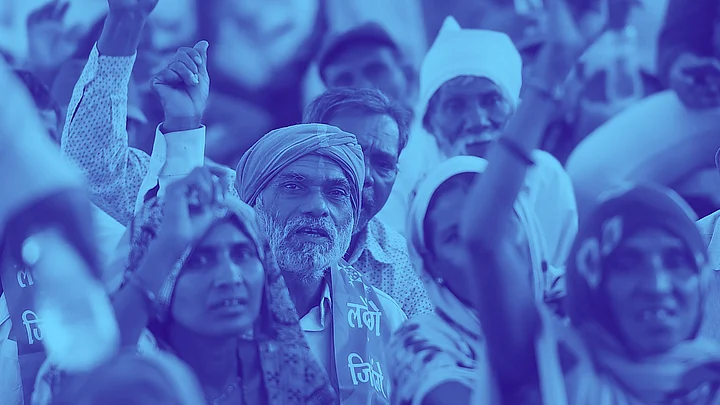There are 290 million policyholders who pay a premium to the Life Insurance Corporation of India (LIC), which is set for what would be India's biggest initial public offer (IPO) of shares. LIC is encouraging its policyholders who do not have demat (dematerialised) accounts so they can subscribe to its issue.
In simple terms, this is like a company that is converting its customers into its shareholders. Good idea, what?
Demat Accounts
Now, consider the number of demat accounts in India in which shares and other securities can be stored for digital transactions. The number of demat accounts held by Indians totalled about 70 million last July, of which 13 million came in the financial year 2020-21.
Consider the gap of 220 million between LIC policyholders and demat account numbers, and you realise that it is about two-thirds of the population of the United States, at 330 million. India's stock market growth potential is huge.
Let me now shift the topic to India's farmers, who have just forced Prime Minister Narendra Modi's government to take back the three controversial farm laws that would have in effect "liberated" them from the clutches of middlemen and thrown their products to free-market forces.
Oh, really? In reality, farmers were upset because a state-controlled procurement system with minimum support prices (MSP) makes them feel secure – it is like having a government job. In effect, farmers from Punjab, Haryana and Uttar Pradesh leading a nationwide agitation were not happy because freedom is a responsibility and MSP is like a government job.
I was recently on a video discussion where a farmers’ union leader explained how farmers would be happy to diversify away from wheat and paddy which drain water resources and electricity to other crops, such as millets, if there were a proper MSP regime for all crops.
One Size Doesn't Fit All
Here's the problem. Farmers want livelihoods and lifestyles. Using the simplistic logic of liberalisation that was ushered in for manufacturing industries in 1991 cannot be simply applied to farmers with a one-size-fits-all approach.
Former Reserve Bank of India Governor Duvvuri Subbarao, citing academic research, says pretty much much what I said in the discussion: that farmers are an interest group that should have been consulted before laws affecting their lives were framed. Experts are not enough. You need stakeholders to be involved. Subbarao says large farmers were losers in the reformist bills and hence led protests that led to the withdrawal of the laws. He argues that gains from reforms are often spread in an uneven manner and favour a minority, while a large section of society has to be included in reformist action for the sake of the public good.
Now, how does one solve the problem of making farmers embrace methods?
My tip: learn from LIC. By making policyholders part of its shareholding community, LIC is sending a message, that if those who pay you are made to gain from your profits, it is a win-win situation, or at least somewhere in that direction.
According to Harish Damodaran, one of India's best-informed agriculture journalists, India's farmer population is anywhere between 100 and 150 million, and about 111 million are enrolled as beneficiaries under the Pradhan Mantri Kisan Samman Nidhi programme.
An 'Amul Model' for Farmers
Look at those numbers. In an LIC-like idea, what if all beneficiaries are given free demat accounts by the government and given shares in an authorised company (or companies) that would buy farm produce?
Arun Maira, a respected corporate strategy figure who was a member of the erstwhile Planning Commission, recently argued in favour of an "Amul model" for farmers.
"The Government’s new policies intended to double incomes of small farmers, which have been languishing while stock markets are soaring. The protesting farmers feared the new policies would enable corporations to make more profits and marginalise farmers further," he wrote.
What is the Amul model? While we know Amul to be a popular brand of milk products, what is less known is that it is managed by the Gujarat Cooperative Milk Marketing Federation, which is jointly owned by 3.6 million milk producers in Gujarat and 13 milk unions.
A lot needs to be done, but the idea of making farm producers gain from the end-user purchase of what they produce instead of being squeezed or made to feel insecure by large corporate entities over which they have no say or control is worth examining.
LIC is showing the way.
(The author is a senior journalist and commentator. He tweets @madversity. This is an opinion piece and the views expressed above are the author’s own. The Quint neither endorses nor is responsible for them.)
(At The Quint, we question everything. Play an active role in shaping our journalism by becoming a member today.)
